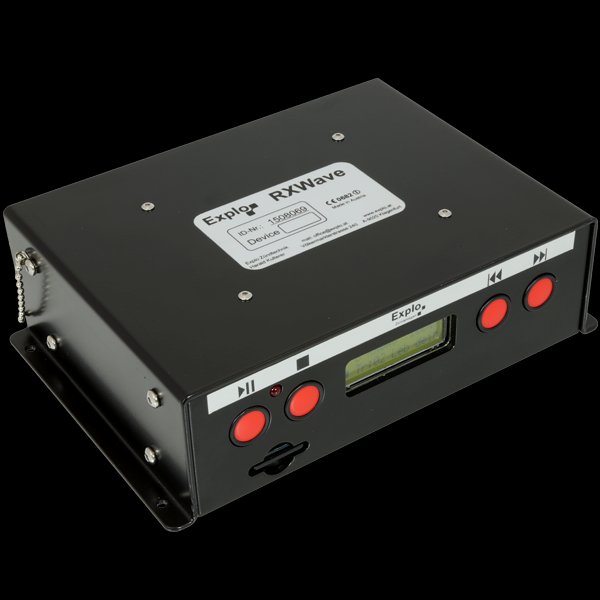

It probably makes sense to setup all of the pushbuttons When a song finishes playing, it also returns to the The player, clears line 2 on the LCD and goes back to the select a song to play If the play pushbutton is hit again while a song is playing it stops

Right before the song starts playing, line 2 on the LCD displays the message “now A third pushbutton will be used to start playing the filenameĬurrently displayed on the text LCD. When advancingīeyond the last filename in the vector, it should wrap around back to theīeginning. A handyįunction to remove the “.wav” file extension is substr (). Do notĭisplay the filename’s “.wav” file extension on the LCD. Less than the 16 characters on one line in the LCD ). The current filename on line 1 of the text LCD (you can assume filenames are To scroll forwards or backwards through the filenames string vector and display Don’t forget that the filename to play will need a prefix withĪlso the file to play needs to be opened each time before playing and once itīasic WavePlayer (70%) - Use two pushbuttons Strings (no null character at end), but there is a function to convert them, c_ str (), that can be found in the earlier filenameĮxample code. Note that C++ strings are stored a bit differently than C Modification to accept a C style string variable as the argument for theįilename to play.
Mbed waveplayer code#
“sample.wav”) argument for the filename, this code will need a minor Hello world example code in main.cpp plays using a string constant (i.e. Is too slow for the wave player and the external SD card must be used. Increasing the clock might only work on some SD cards and the breadboard jumper Reading the SD card file in the SDFileSystem classĪnd claims even higher sample rates, but it will work as is to at least 16Khz. Increased the SPI clock frequency in SDFileSystem.cpp from 1Mhz to 20Mhz while Sample rate is the read time of the SD card. Terminal application window by the waveplayer code.
Mbed waveplayer Pc#
Transferred to the micro SD card using a PC with the SD card reader adapter.Įrror messages are displayed with printfs to a PC It= filenames.begin() it 20Khz?) and they can be print filename strings from vector using an read file names into vector of strings Vector filenames //filenames are stored in a vector stringįilenames.push_ back (string( dirp-> d_name)) It will need to be modified toĭisplay filenames individually on the LCD rather than listing them on the PC.

This code shows how theįilename strings can be read into a vector. SD card file system is already setup in the program. There is an existing C++ structure setup, dirent, that can be used to read directoryĮntries that makes the code relatively short. Snippet is provided below that reads the filenames from this directory into aĬ++ vector of strings and prints all of the filenames out to the PC terminalĪpplication window. Select one of the files in the myMusic directory to Paste can be used for entire C++ source files in the right column in the mbed cpp files need to be copied over into the project, and the includes for them will need to be added in main.cppĪlong with the code to setup and activate the pushbutton callbacks. Don’t forget the TextLCD and PinDetect *.h and *. You can cut and paste the pushbutton and setup LCD codeįrom the earlier mbed lab and add it to the waveplayer helloworld example. Other parts (LCD, micro SD, speaker with driver, and pushbuttons) from theĮarlier lab are used. Time to use the same pin assignments and breakout board placement as theĮarlier mbed lab. You to select which song to play on the LCD, play/stop, and adjust the volume Your assignment will be to create and add a user interface that allows While the wave player routine is reading and buffering audio sample values toĪlready included in the waveplayer hello worldĮxample. Interrupt routine that outputs the next D/A value from a buffer and returns, These timer interrupts periodically activate a fast Not be quite as loud using the D/ A output as theĮarlier lab that used the PWM output to drive the speaker.Ĭlass code used, a timer producing periodic interrupts (mbed Ticker API) is used to control theĪudio sample rate. Don’tįorget that a “sample.wav” wave file is needed on the SD card.

Good idea to run the waveplayer hello world programįirst to verify that the SD card and speaker hardware is setup correctly. Tube video on that web page to hear how it sounds. Import the waveplayer hello world code example as Output described in the waveplayer section at.
Mbed waveplayer driver#
Will play a wave file from the SD card using the speaker with the driver There is an existing waveplayer hello world program that
Mbed waveplayer portable#
The mbed inventor’s kit parts will be used to build a portable music player.


 0 kommentar(er)
0 kommentar(er)
